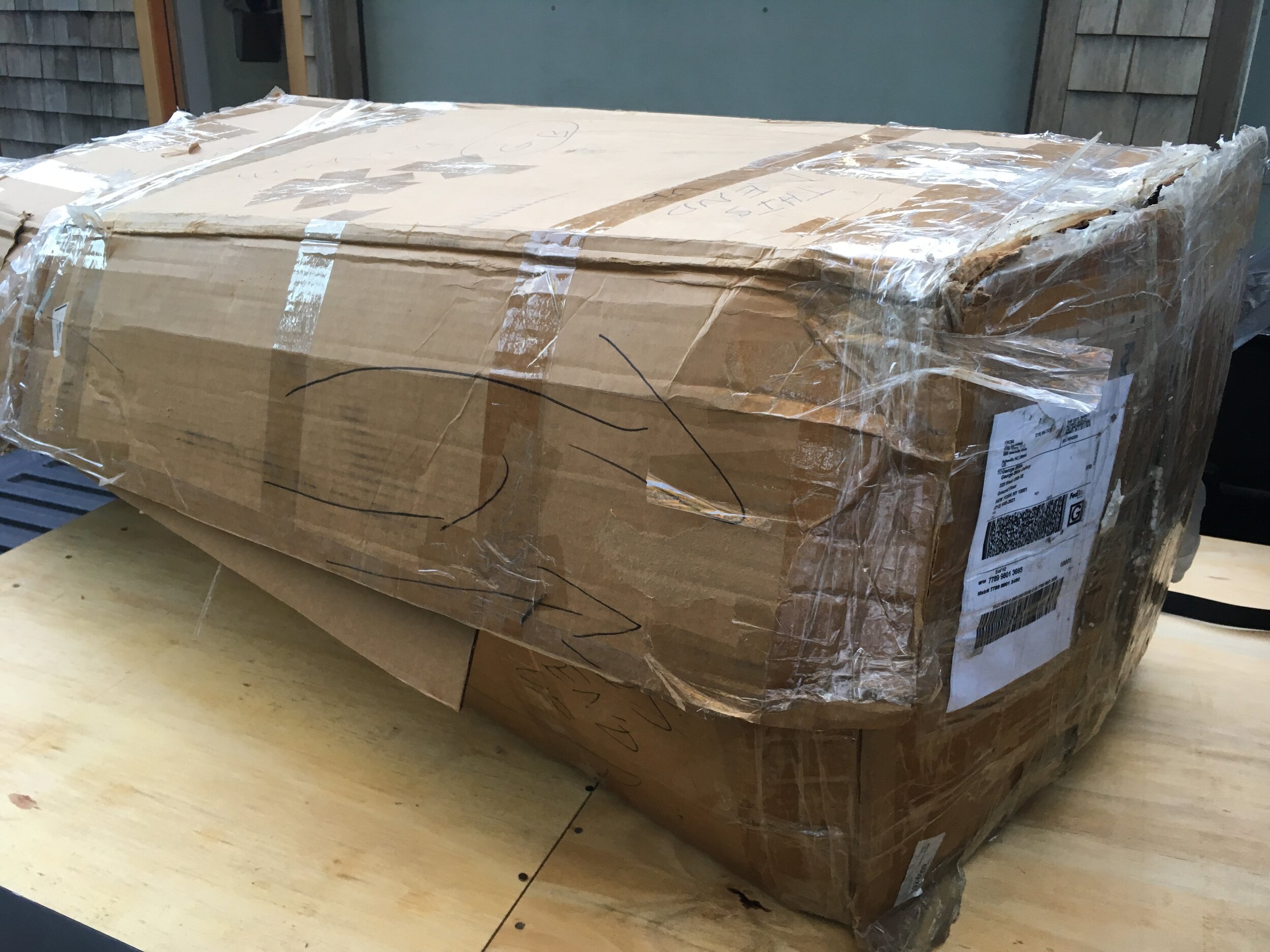[Artists’ Color Series paint tubes individually wrapped in preparation for shipping.]
The second worst thing that can happen to an artist’s work is damage (we won’t go into the worst thing here). Sculpture in particularly is difficult to ship - bulky, heavy, often fragile - and requires careful packing to protect it.
Art handlers generally do not have insurance for damage to the work, which is typically covered by the policy of the gallery or the artist (if they can afford it). Regardless, it is far better to be over-packed than to have to deal with damage. Accordingly I pack my work carefully with an eye to surviving everything up to getting stabbed with a forklift.
Each of my paint tubes is quadruple wrapped in 1/2” bubble wrap with extra protection at the ends. For domestic shipping the tubes are solidly packed (to prevent movement) inside a foam-cushioned, plywood-lined extra-heavy duty double-wall cardboard box. This may sound like overkill but I have yet to have any significant damage to work shipped this way despite evidence of serious mishandling such as shipped standing on end (despite clearly labeled arrows pointing UP) and holes bashed through the plywood(!).
[A typical plywood-lined, solidly-packed box waiting for pickup at my studio.]
Now you would think that a gallery receiving work packed this way would take note and document the packing method. You would also think that the gallery would save the packing material to reuse when sending the work to a buyer or returning it to the artist. Alas. Such simple, logical, responsible behavior is beyond the New York gallery that returned 4 paint tubes to me like this:
The work was damaged, of course. And the response of gallery owner, who claimed to have personally packed the work and instructed the art mover to transport it standing on end? “That’s impossible. I’m not paying out of pocket for that!”
Look - shit happens, I get it. The question is not whether you made a mistake, but how you deal with it. This particular gallery owner blamed the damage on “defective work” despite the repeated shipping of 23 works between galleries in NY and LA and art fairs from Miami to Chicago, Syracuse to Palm Springs, all without damage.
Imagine how different this would have been if the gallery owner had said “I’m sorry. What can we do to make this right?”
ARTIST TIP: Make sure your consignment agreement specifies that the gallery insures the work and is responsible for all damages while in their care, including during shipping. Carefully document everything with paperwork such as shipping / delivery receipts and photographs. Also research state law where you exhibit as many states have laws designed to protect artists from the egregious behavior of galleries like this one. New York for example describes the gallery as a fiduciary, with the same level of legal responsibility as the executor of an estate.

![[Artists’ Color Series paint tubes individually wrapped in preparation for shipping.]](https://images.squarespace-cdn.com/content/v1/554781e3e4b08d5dd9374f66/1572466645248-WB2U2PV8K9B6P5SMZG4O/IMG_5730.JPG)
![[A typical plywood-lined, solidly-packed box waiting for pickup at my studio.]](https://images.squarespace-cdn.com/content/v1/554781e3e4b08d5dd9374f66/1572465804266-VN7ON59Z3WNJVEMCO3WU/IMG_5968.JPG)
![[How I received the work back.]](https://images.squarespace-cdn.com/content/v1/554781e3e4b08d5dd9374f66/1572466937249-EXK5E7N4V4SRVQ00M6PI/IMG_7910.JPG)


![[Nice packing job.]](https://images.squarespace-cdn.com/content/v1/554781e3e4b08d5dd9374f66/1572466953982-EVT9CSEGRVQXSMAANEZF/IMG_7905.JPG)